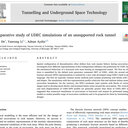Increased glycogen synthase kinase-3β and hexose-6-phosphate dehydrogenase expression in adipose tissue may contribute to glucocorticoid-induced mouse visceral adiposity.
Nyckelord
Abstrakt
Increased adiposity in visceral depots is a crucial feature associated with glucocorticoid (GC) excess. The action of GCs in a target tissue is regulated by GC receptor (GR) and 11ß-hydroxysteroid dehydrogenase type 1 (11ß-HSD1) coupled with hexose-6-phosphate dehydrogenase (H6pdh). Glycogen synthase kinase-3β (GSK3β) is known to be a crucial mediator of ligand-dependent gene transcription. We hypothesized that the major effects of corticosteroids on adipose fat accumulation are in part mediated by changes in GSK3β and H6pdh.
We characterized the alterations of GSK3β and GC metabolic enzymes, and determined the impact of GR antagonist mifepristone on obesity-related genes and the expression of H6pdh and 11ß-HSD1 in adipose tissue of mice exposed to excess GC as well as in in vitro studies using 3T3-L1 adipocytes treated with GCs.
Corticosterone (CORT) exposure increased abdominal fat mass and induced expression of lipid synthase acetyl-CoA carboxylase and ATP-citrate lyase with activation of GSK3β phosphorylation in abdominal adipose tissue of C57BL/6J mice. Increased pSer(9) GSK3β was correlated with the induction of H6pdh and 11ß-HSD1. In addition, mifepristone treatment reversed the production of H6pdh and attenuated CORT-mediated production of 11ß-HSD1 and lipogenic gene expression with reduction of pSer(9) GSK3β, thereby leading to improvement of phenotype of adiposity within adipose tissue in mice treated with excess GCs. Suppression of pSer(9) GSK3β by mifepristone was accompanied by activation of pThr(308) Akt and blockade of CORT-induced adipogenic transcriptor C/EBPα and PPARγ. In addition, mifepristone also attenuated CORT-mediated activation of IRE1α/XBP1. In addition, reduction of H6pdh by shRNA showed comparable effects to mifepristone on attenuating CORT-induced expression of GC metabolic enzymes and improved lipid accumulation in vitro in 3T3-L1 adipocytes.
These findings suggest that elevated adipose GSK3β and H6pdh expression contribute to 11ß-HSD1 mediating hypercortisolism associated with visceral adiposity.






